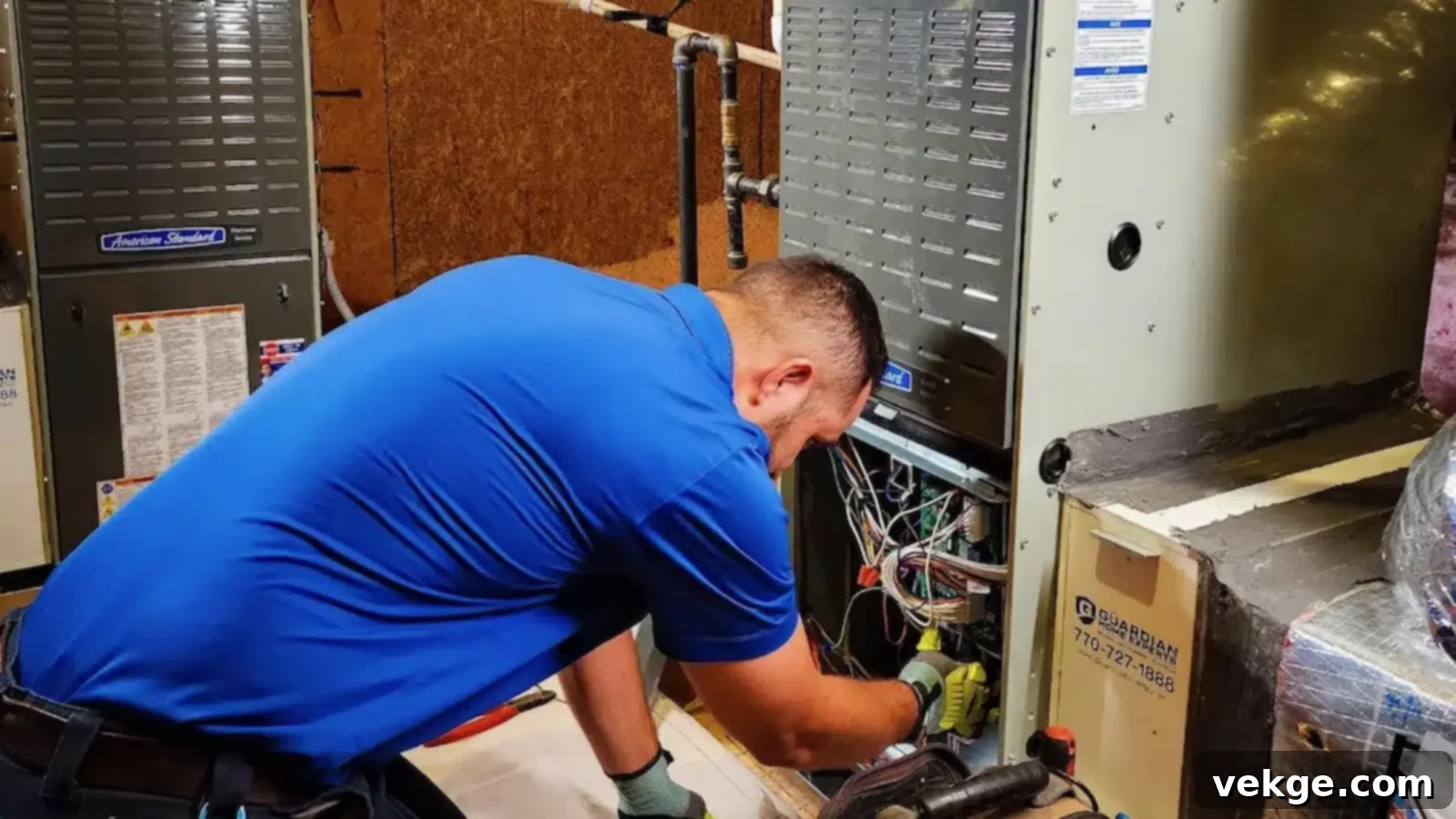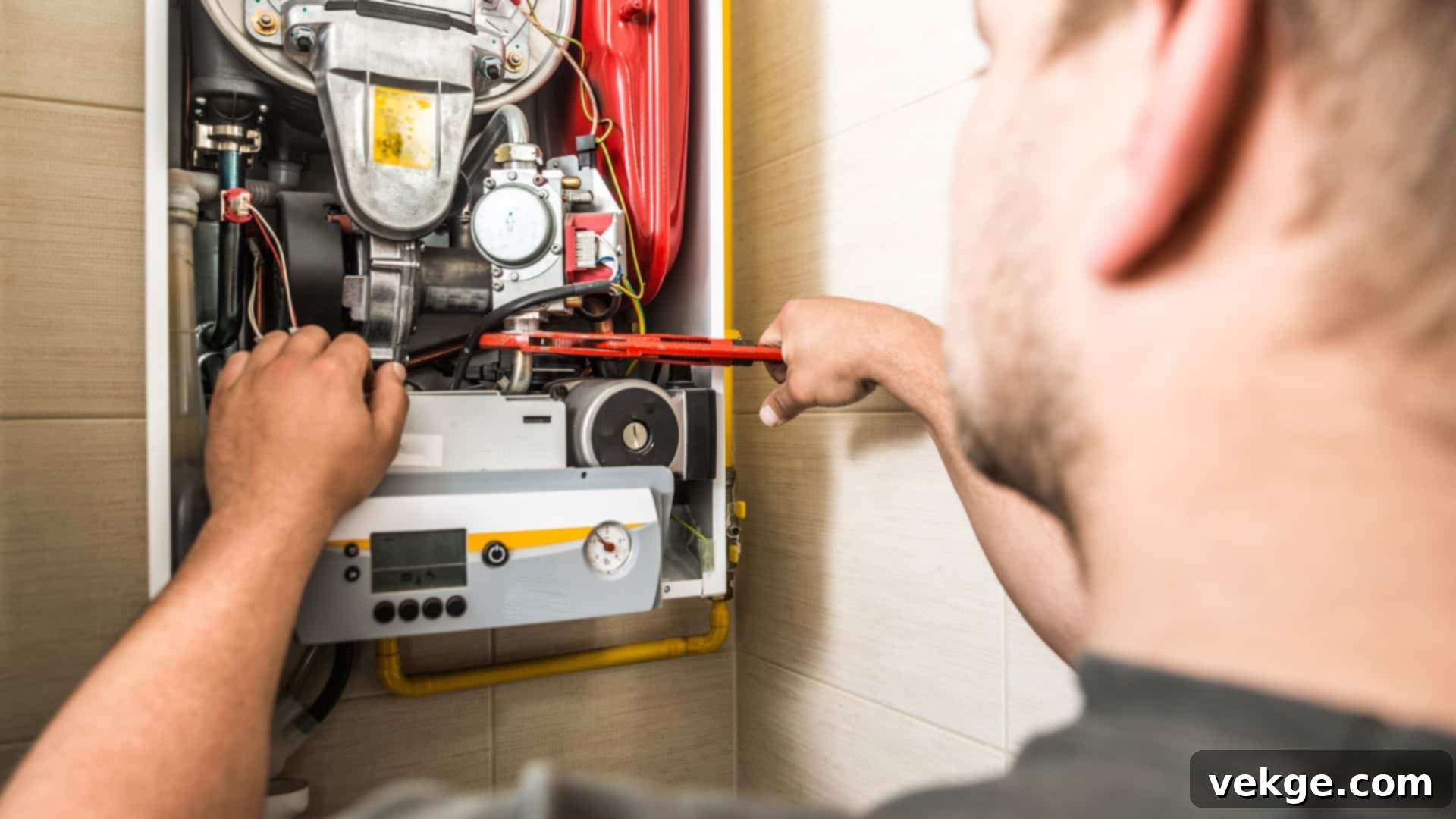Ultimate Furnace Prep: Essential Maintenance & Repair Guide Before Winter
As the vibrant colors of autumn begin to fade and the crisp chill of winter looms, one critical question should be on every homeowner’s mind: Is your furnace truly ready for the demands of the colder months ahead? Ensuring your heating system is in prime condition isn’t just about comfort; it’s about safeguarding your family’s well-being, optimizing energy efficiency, and preventing costly, inconvenient breakdowns. Neglecting your furnace until the first major cold snap can lead to a cascade of problems, from unexpected repairs to safety hazards.
The proactive approach is always the best defense against winter’s bite. By following a step-by-step furnace upkeep guide, you can identify and address potential issues early on, long before they escalate into emergencies. Understanding the tell-tale signs that your furnace might be struggling is the first step toward a warm, worry-free winter. Here are common indicators that your furnace may need attention and why addressing them now, before the full onset of winter, is absolutely vital.
Recognizing the Warning Signs: Is Your Furnace Struggling?
Your furnace often communicates its needs through subtle (and sometimes not-so-subtle) cues. Learning to interpret these signals can save you from a cold house and an unexpected bill. Here are the key indicators to watch out for:
Unusual Noises or Uneven Heating

A healthy furnace operates with a relatively consistent and gentle hum. If you start noticing new, strange, or louder sounds emanating from your heating system, it’s a clear indication that something isn’t right. These noises are often signals of mechanical stress or failing components within the unit. Ignoring them can lead to accelerated wear and tear, eventually culminating in a complete system failure.
- Rattling: This often suggests loose panels, ductwork connections, or other components that have come unsecured. It could also point to a problem with the blower motor assembly.
- Banging or Popping: These sounds can occur if your furnace’s burners are dirty, leading to delayed ignition. When gas builds up and then ignites, it can cause a small explosion-like sound. This is not only inefficient but can also be a safety concern.
- Squealing or Screeching: Typically, these high-pitched sounds indicate a problem with the blower motor’s belt or bearings. Worn-out or loose belts need immediate attention to prevent further damage to the motor.
- Grinding: A metallic grinding sound usually points to a failing motor bearing, either in the blower motor or the inducer motor. This is a serious issue that requires professional repair promptly.
Beyond peculiar sounds, another common issue is inconsistent temperature distribution throughout your home. If you notice that certain rooms are significantly warmer or colder than others, your furnace may not be distributing heat evenly. This disparity can stem from several factors, including:
- Clogged Air Filters: A dirty filter restricts airflow, making it harder for the furnace to push heated air through the ductwork effectively.
- Ductwork Issues: Leaks, blockages, or poorly designed duct systems can prevent conditioned air from reaching all areas of your home.
- Malfunctioning Blower: The blower motor is responsible for circulating air. If it’s weak or failing, heat distribution will suffer.
- Thermostat Problems: An improperly calibrated or faulty thermostat might not be accurately reading temperatures or signaling the furnace correctly.
Uneven heating doesn’t just cause discomfort; it also forces your furnace to work harder, consuming more energy and potentially leading to higher utility bills.
Increased Energy Bills and Furnace Age
A sudden and unexplained spike in your monthly energy bills, especially during seasons when your usage patterns haven’t significantly changed, is a prominent red flag. Your furnace is likely the biggest energy consumer in your home during winter, so any efficiency loss will quickly reflect in your costs. If your furnace is working overtime to maintain a comfortable temperature, it’s a clear sign of inefficiency. This could be due to a myriad of reasons:
- Worn-Out Components: Over time, parts like the heat exchanger, blower motor, or burners can degrade, making the furnace less efficient.
- Dirty Air Filter: A severely clogged filter can reduce airflow by up to 30%, forcing the furnace to operate longer and harder.
- Lack of Maintenance: Without regular tune-ups, dust and grime accumulate, hindering performance.
- Improper Sizing: A furnace that’s too small will run constantly, while one that’s too large will cycle too frequently, both leading to inefficiency.
The average lifespan of a modern furnace is typically between 15 to 20 years, though this can vary based on maintenance, usage, and initial quality. If your furnace is nearing or exceeding this age, it’s inherently more prone to experiencing breakdowns. Older units are not only less reliable but are also significantly less energy-efficient than their modern counterparts. Technological advancements in heating systems over the last two decades have drastically improved energy consumption. An older furnace with a lower Annual Fuel Utilization Efficiency (AFUE) rating will inevitably cost you more in utility bills compared to a new, high-efficiency model. Considering a replacement might be a more cost-effective option in the long run, offering improved reliability, safety, and substantial savings on energy bills.
Strange Smells
A properly functioning furnace should not produce any strong or unusual odors. If you detect peculiar smells, it’s crucial to investigate them immediately, as some can indicate serious safety hazards. Here’s what different smells might signify:
- Burning Dust: This is a common smell at the beginning of the heating season as dust accumulated over the summer on heating elements burns off. It usually dissipates within a few hours. If it persists, it could indicate a deeper problem.
- Burning or Electrical Smell: A persistent burning smell, especially like burning plastic or wiring, is a serious concern. It could indicate an electrical problem, an overheated motor, or failing components. This requires immediate professional attention as it poses a fire risk.
- Sulfur or Rotten Eggs (Gas Smell): This is perhaps the most dangerous smell. Natural gas is odorless, but utility companies add mercaptan, a chemical that smells like rotten eggs, for safety. If you smell gas, immediately turn off your furnace, open windows, evacuate your home, and contact your gas company and HVAC professional from a safe distance. Do not operate any electrical switches or create any sparks.
- Musty or Moldy Smell: A musty odor often signals a mold or mildew problem within your furnace system or ductwork. This can be caused by moisture issues and can negatively impact your indoor air quality, potentially leading to respiratory problems.
- Oil Smell (for oil furnaces): While a slight oil smell might be normal immediately after an oil furnace starts up, a strong, persistent oil smell could indicate a leak or combustion issue.
Why Proactive Repair or Replacement Before Winter is Crucial

Getting your furnace repaired or replaced before the cold season fully takes hold is not merely a suggestion; it’s an essential strategy for a stress-free winter. The benefits extend far beyond simply having heat when you need it most:
- Prevents Emergency Breakdowns: The most obvious benefit is avoiding a sudden furnace breakdown in the middle of a brutal cold snap. Losing heat during freezing temperatures is not only incredibly inconvenient and uncomfortable but can also be dangerous, especially for vulnerable family members.
- Cost Savings: Emergency repairs during peak winter demand often come with premium “rush fees” and higher service charges. Scheduling repairs or replacements in advance allows you to avoid these inflated costs and gives you more flexibility to choose the right professional at a fair price. Furthermore, addressing minor issues early prevents them from escalating into more extensive and expensive repairs down the line.
- Avoid Delays and Limited Availability: When winter hits, HVAC technicians are inundated with service calls. Scheduling your furnace maintenance or replacement in the fall means you’ll have an easier time booking an appointment at your convenience, rather than waiting days or even weeks for service when you’re without heat.
- Improved Efficiency and Extended Lifespan: Early maintenance helps identify and address potential problems that can diminish your furnace’s efficiency. A well-maintained furnace operates more efficiently, consuming less energy and translating into lower utility bills. Moreover, proper care significantly extends the lifespan of your unit, delaying the need for a costly replacement.
- Enhanced Safety: Many furnace issues, particularly those involving gas leaks, carbon monoxide, or electrical faults, pose serious safety risks. Proactive inspections and repairs ensure all components are functioning safely, protecting your family from potential hazards.
- Better Indoor Air Quality: Regular maintenance, including cleaning and filter replacement, contributes to healthier indoor air quality by reducing the circulation of dust, allergens, and pollutants.
Comprehensive Furnace Maintenance and Energy Efficiency Strategies
Beyond addressing specific warning signs, regular furnace maintenance is the cornerstone of optimal performance, energy efficiency, and longevity. It’s an investment that pays dividends in comfort and savings.
DIY Maintenance Steps You Can Take
- Change Air Filters Regularly: This is arguably the most crucial and simplest maintenance task. A dirty filter restricts airflow, forcing your furnace to work harder and increasing energy consumption. It also compromises indoor air quality. Check your filter monthly and replace it every 1-3 months, or more frequently if you have pets, allergies, or a large household.
- Clear the Area Around Your Furnace: Ensure there’s at least two feet of clear space around your furnace. This provides adequate airflow for the unit and allows technicians easy access for service. Remove any flammable materials from the vicinity.
- Check Vents and Registers: Ensure all supply and return air vents are open and not blocked by furniture, rugs, or drapes. Blocked vents can disrupt airflow and lead to uneven heating.
- Inspect the Thermostat: Ensure your thermostat is functioning correctly and set to the appropriate mode (heat/auto). Consider upgrading to a programmable or smart thermostat to optimize heating schedules and save energy.
The Importance of Professional Furnace Tune-Ups
While DIY tasks are important, they don’t replace the thorough inspection and cleaning provided by a certified HVAC technician. Scheduling annual professional tune-ups for your furnace is paramount. During a tune-up, technicians perform a multi-point inspection and service, which typically includes:
- Thorough Cleaning: Cleaning the burners, flame sensor, heat exchanger, and blower components to remove dust and debris that can hinder efficiency and performance.
- Lubrication: Lubricating moving parts to reduce friction and wear, extending the life of motors and bearings.
- Electrical System Check: Inspecting all electrical connections, wiring, and components for wear or damage to prevent electrical faults and ensure safe operation.
- Gas Pressure and Carbon Monoxide Check: Verifying correct gas pressure and ensuring the system is not producing dangerous levels of carbon monoxide – a silent killer.
- Safety Controls Test: Testing all safety mechanisms to ensure they are fully functional.
- Component Inspection: Examining the heat exchanger for cracks, checking the blower motor and wheel, and inspecting the ignition system.
- Performance Optimization: Adjusting settings for optimal heating performance and energy efficiency.
These comprehensive checks help identify and address potential issues before they become major problems, improving your furnace’s reliability and extending its lifespan.
Beyond the Furnace: Maximizing Home Energy Efficiency
Your furnace’s efficiency is also influenced by the overall thermal integrity of your home. Consider these additional energy-saving measures:
- Seal Air Leaks: Seal air leaks around windows, doors, and utility penetrations with caulk and weatherstripping. This prevents heated air from escaping and cold air from entering, significantly reducing your furnace’s workload.
- Improve Insulation: Adequate insulation in your attic, walls, and crawl spaces is critical for retaining heat. This acts as a barrier, keeping your home warmer with less effort from your furnace.
- Smart Thermostats: Upgrade to a smart thermostat that learns your habits and adjusts temperatures automatically, or allows you to control your heating remotely. This can lead to substantial energy savings.
- Consider Zoning: If you have a large home, a zoning system can allow you to heat only the areas you are using, further optimizing energy consumption.
Wrapping Up: Embrace a Warm and Worry-Free Winter
A well-maintained and efficiently operating furnace is not just a luxury; it’s an essential component for ensuring your home remains warm, comfortable, and safe throughout the winter months. By actively paying attention to the warning signs of a potential furnace problem and addressing them promptly, you can effectively avoid unexpected breakdowns, costly emergency repairs, and the discomfort of a cold home.
Embrace a proactive approach to your home’s heating system. Regular maintenance, including the simple yet crucial task of changing air filters and scheduling annual professional tune-ups, is the key to optimal performance and long-term energy efficiency. Investing a little time and resources into your furnace before the peak of winter will undoubtedly pay significant dividends. You’ll gain reliable heat, enjoy reduced energy costs, breathe cleaner indoor air, and most importantly, attain the priceless peace of mind that comes from knowing your home is prepared for whatever winter brings.
